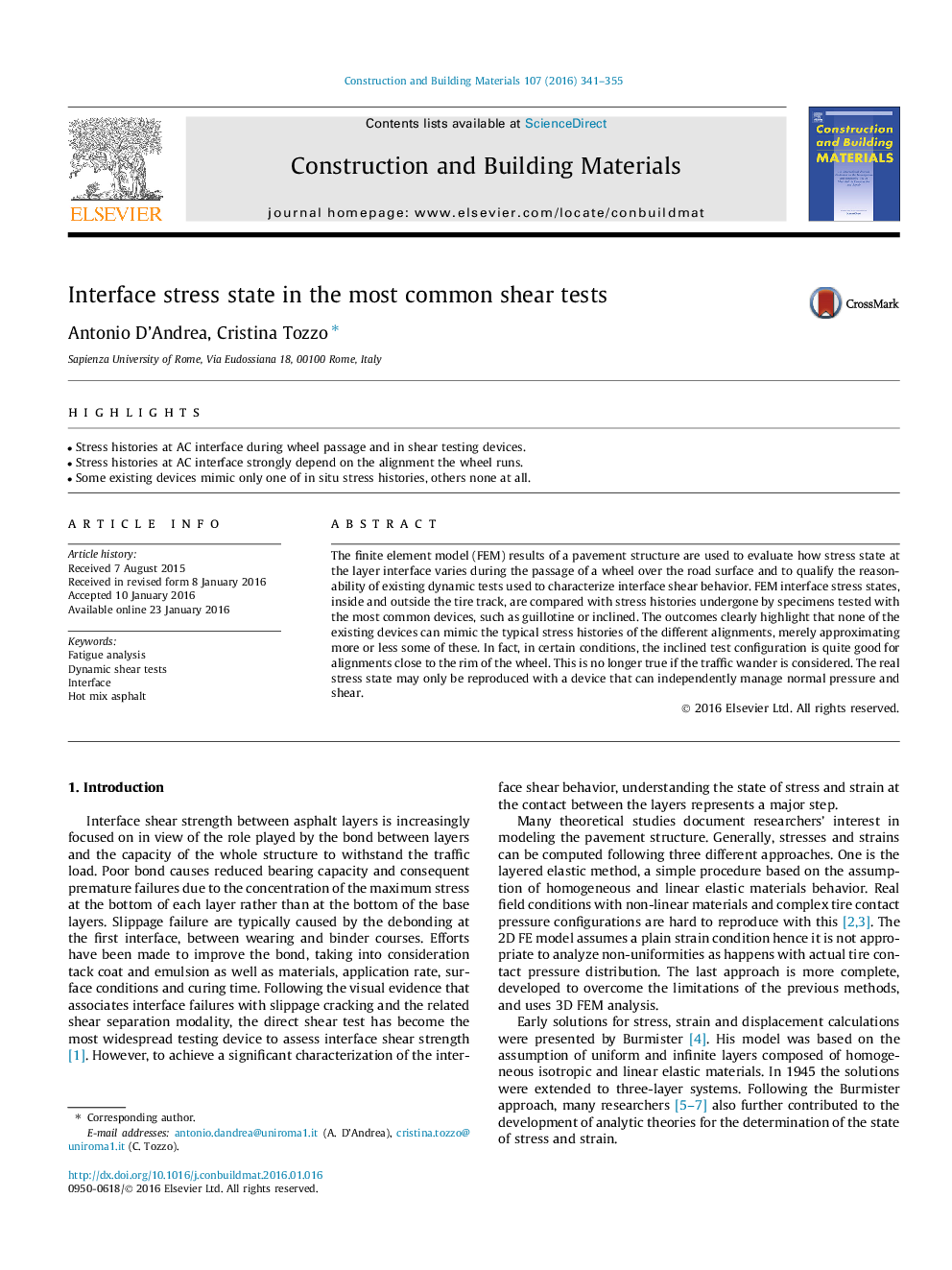| Article ID | Journal | Published Year | Pages | File Type |
|---|---|---|---|---|
| 256262 | Construction and Building Materials | 2016 | 15 Pages |
•Stress histories at AC interface during wheel passage and in shear testing devices.•Stress histories at AC interface strongly depend on the alignment the wheel runs.•Some existing devices mimic only one of in situ stress histories, others none at all.
The finite element model (FEM) results of a pavement structure are used to evaluate how stress state at the layer interface varies during the passage of a wheel over the road surface and to qualify the reasonability of existing dynamic tests used to characterize interface shear behavior. FEM interface stress states, inside and outside the tire track, are compared with stress histories undergone by specimens tested with the most common devices, such as guillotine or inclined. The outcomes clearly highlight that none of the existing devices can mimic the typical stress histories of the different alignments, merely approximating more or less some of these. In fact, in certain conditions, the inclined test configuration is quite good for alignments close to the rim of the wheel. This is no longer true if the traffic wander is considered. The real stress state may only be reproduced with a device that can independently manage normal pressure and shear.
